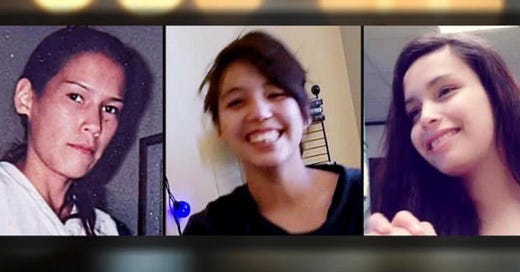The piece on the other side of the paywall was written by yours truly and first published by a prominent Canadian media outfit.
It deals with is the refusal of the ruling Progressive Conservative government of Manitoba to support a search for the remains of two presumably murdered indigenous women supposedly buried in a landfill on the outskirts of Winnipeg, an issue that may well effect the outcome of the October 3 provincial election.
Because I live in Winnipeg, a city containing 102,000 indigenous citizens, or 12 percent of its population, I have paid special attention to this tragic landfill burial issue from the get go, resulting in 15 publications since early December 2022.
Before offering one of these for your reading on the other side of the paywall, I present important excerpts from a publication that have already appeared here.
As for the many pieces not yet re-published here, if the Progressive Conservative government is returned to power on October 3, they may never be re-posted at least if this issue fades from the scene.
Still, indigenous activists have been conditioned for decades to never accept no for an answer when demanding action from governments or the courts regardless of how extreme and undeserved they may be.
If the NDP gains power on Tuesday, as recent polls suggest, the burial issue will continue to be a hot button one because the party’s indigenous leader, Wab Kinew, is fully committed to landfill searches regardless of the cost and near zero chance any remains will be found.
This is because the actual excavation would start some 700 days after women’s body parts were carried to the landfills, an assertion based on my reading of the findings and recommendations of forensic experts: if an excavation began six months after the election, the length of time the experts said was necessary to do all the preliminary work, the women would have been buried nearly 12 times longer than the 60 day maximum such a landfill search needs to begin to produce any hope of success.

Also, as a wrote in an earlier publication:
[There are grounds] for challenging the established indigenous narrative this effort [to search for two missing women — Morgan Harris and Marcedes Myran — in Winnipeg landfills] is meant only to give closure to the families and communities of these women.
The particular details of Morgan Harris’ life, only now being told, dispute this view as well. According to her daughter Cambria, an activist in her own right, she was removed from her mother’s care at the age of six.
“I probably didn’t see her for a few years after that,” she recently claimed.
Cambria was herself part of the child welfare system until she was 17. She said she watched her mother struggle with addiction, mental health issues and homelessness after she lost custody of her children.
"She was in and out of treatment centres and homeless centres repeatedly trying to get help, and she spent her life on the streets fighting to survive, and she lived in fear."
Yet her family or community members may never have attempted to bring her home.
Yes, Morgan’s death at such a young age — she was only 39 — is a tragic event, but to remove her human agency by blaming society for her problems only serves to infantilize indigenous women. It also exempts Cambria and the children of the other victims from doing more to ensure their safety.
The case of Marcedes Myran, one of Skibicki’s alleged victims, is particularly instructive of the troubled nature of many indigenous families. Her mother waited seven long months before finally reporting her as missing to the police in late September.
Perhaps shame and guilt are also driving the grief, anguish, and zeal to find the remains of these women.
Moreover, why is it that the longer indigenous people have been dead, the more their communities are frantically searching for them?
The alleged burials of 215 Indian Residential School students near the former Kamloops boarding school is a current example that points to the answer: money.
In the unmarked graves’ case the federal government allocated $321 million to search for Indian Residential School graves and allied issues. If such an amount is being distributed to look for children never reported missing by their parents, how much will the Indian Industry extort from a compliant Trudeau government to direct all aspects of the search for the remains of women known to have been murdered?
After all, the relatively simple 2002 excavation of serial killer Robert Pickton’s pig farm cost nearly $70 million. Much more would surely be needed to excavate the Prairie Green and Brady Road landfills, the likely result being no evidence of the remains of the two murdered women. But given the precedent of similar searches, the Indian Industry will be heavily rewarded for its participation.
The most politically incorrect question the mainstream media would never ask is whether there would be the same control given to family and community leaders over the burial search of these four women, as expressed in Marc Miller’s words above, if Skibicki were an indigenous man or if the four murdered women were white females?
Keep reading with a 7-day free trial
Subscribe to REAL Indigenous Report to keep reading this post and get 7 days of free access to the full post archives.




